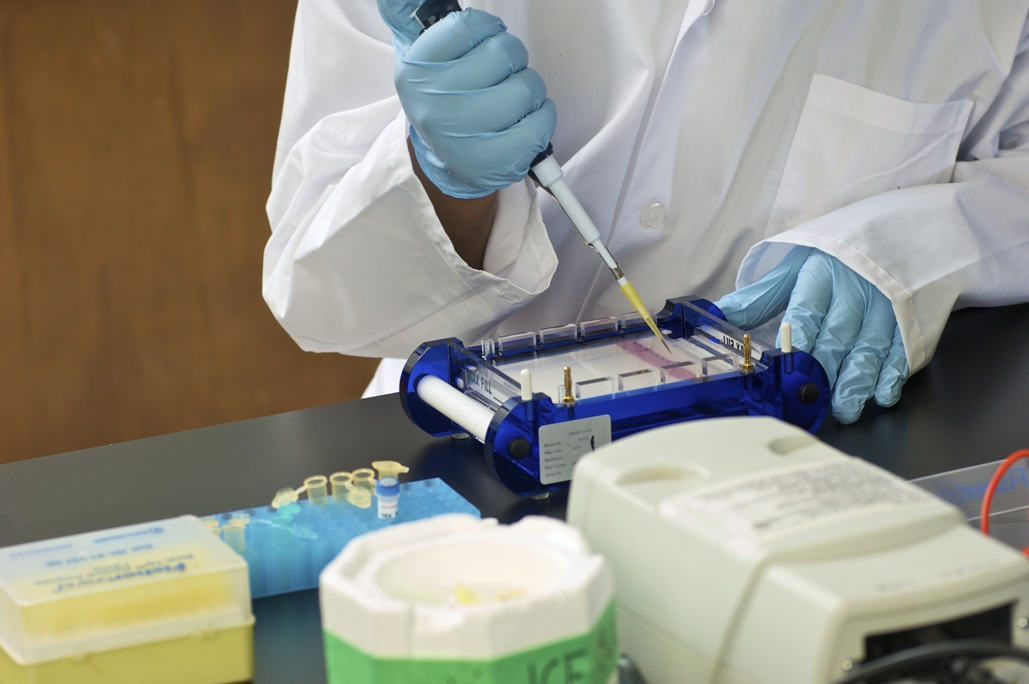
Can bugs turn waste into fuel?
Postdoctoral Fellow Miloslav Sailer is studying in the chemistry lab of professor John Sorensen at the University of Manitoba. In extremely simplified terms, his research examines bio-fuel derivatives.
Recently, Sailer wrote an article on bio-fuels for the blog Biofueled. We re-post it below.
We have been given an ultimatum by Mother Nature to smarten up. As Professor Martin Tangney keenly put it at the Advanced Biofuels Symposium (ABS) in Ottawa this year, “We are like children walking into a candy shop”. He was referring, of course, to our juvenile nature to gobble-up all of our oil reserves. But not only are we draining a very finite resource: by burning these oils, we are also reversing all the difficult carbon dioxide clean-up work Mother Nature has accomplished over the past millions of years.
But what if we could instead fuel our cars with the same stuff that has fueled our bodies for millennia? This is where biofuels come in. At the Advanced BioFuelNet symposium this past May, I learned that there are many initiatives around the world driving the implementation of biofuels such as bioethanol, biodiesel, and biobutanol. Unfortunately, the production of such fuels produces a lot of waste, such as glycerin and fatty acids. These non-fuel by-products of biodiesel production from oils present a challenge for companies, who often struggle to find a use for them. The real-world significance of this problem was highlighted by Suncor Energy VP Jim Provias, a panel member at the symposium, who revealed that his company needs to pay others to dispose of all the glycerin produced. This illustrates the pressing need to develop ways to turn this waste into something useful.
This is where our research initiative comes in. I am a Post-Doctoral organic chemist under Dr. Sorensen, and I am very grateful for the opportunity and financial support I received that allowed me to be part of the advanced biofuels initiative led by BioFuelNet. I currently work with a group of very talented biosystems engineers, led by Dr. Levin, that have discovered a new bug called Pseudomonas Putida LS 46. This bug has the capability to consume free fatty acids and glycerin (i.e. waste) to produce biodegradable plastics called polyhydroxyalkanoates. These plastics can be converted into biofuel-like molecules called β-hydroxyesters using a procedure similar to the production of biodiesel from oils. This procedure generates a mixture of 4 or 5 different molecules, and the ratio of the molecules can be modified either through genetic engineering of the bugs, or though biosystems engineering of the growth conditions. This raises the question: which of these molecules is the best fuel, or fuel-additive?
I have been developing a method to synthesize these individual pure molecules in the laboratory. Fortunately enough, I was successful.
One of the greatest challenges was scaling-up the reaction to provide enough fuel to be tested in biofuel testing facilities. We have discovered that these molecules have a high energy content, and provide increased cold weather performance when blended with biodiesel.
Currently, I am working on modifying these molecules even further to enhance their fuel properties (e.g. oxidative stability). With some simple and inexpensive alterations to the products of Pseudomonas Putida LS 46, I believe that a tangible fuel additive could be produced from waste. I envisage that companies could feed waste by-products into a series of bioreactors and reaction vessels, and then mix the fuel additive products back into the fuels they are making, thereby both eliminating waste and making a better fuel.
I have always believed solving a problem effectively requires many different perspectives, and I am glad to see that BioFuelNet has brought together researchers from a variety of disciplines to tackle the non-carbon-neutral CO2 emissions problem associated with liquid fuels. As an organic chemist I am glad to be a part of a network that is building towards a sustainable energy future. One day we will look back at these juvenile oil-burning years and tell our children: we smartened up.
Can coffee cups fuel our engines?
Read more
Converting Agricultural Waste Products into Biofuels
Turning cattails to fuel (VIDEO)
Error thrown
Object of class WP_Error could not be converted to string








